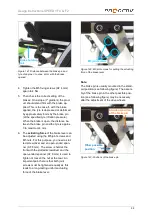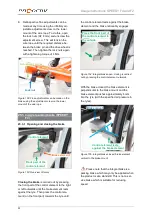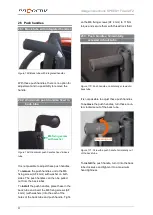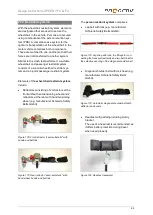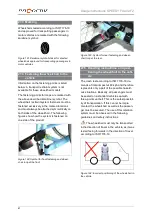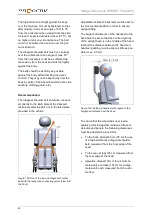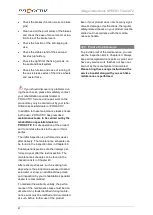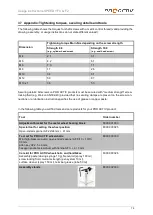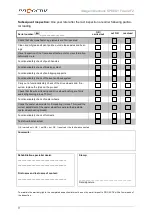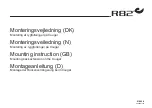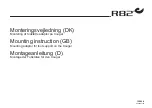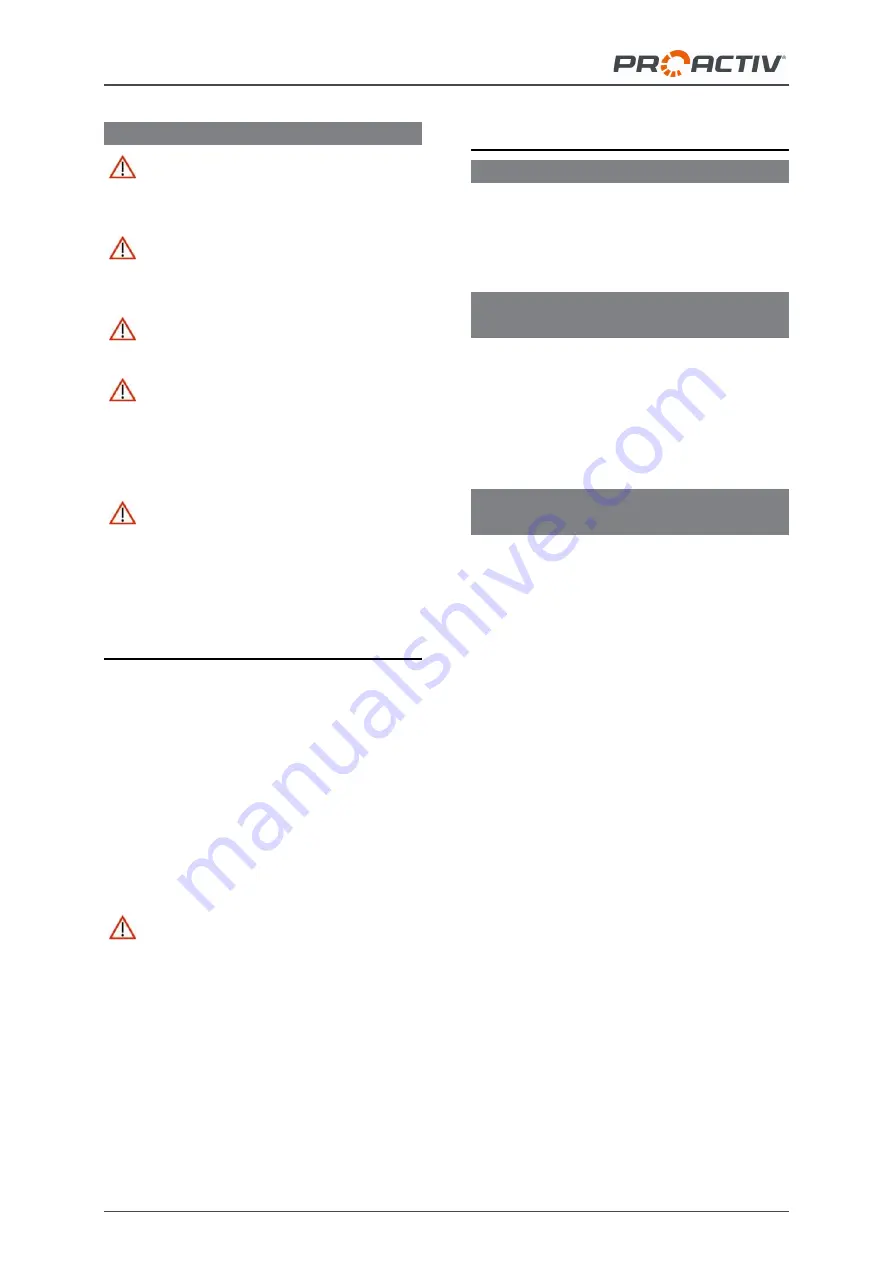
Usage instructions SPEEDY F4 & F2
64
27.6 Safety instructions
You must be able to hear each belt link
engage in the buckle. Belts must not be twisted
and not run crossed-over.
For belt systems (hip, diagonal shoulder
belt, retractors), the instructions for use of the
respective manufacturer must be observed.
During transport, the parking brake of the
product must be applied.
Loose parts of the wheelchair (therapy
tray, crutches, etc.) must be removed prior to
the journey and stowed securely in the vehicle
to prevent injuries to the vehicle occupants in
the event of a collision.
Wheelchairs and restraint systems that
have been exposed to an impact must be re-
placed. They may no longer be used as a seat
or for securing in motor vehicles.
28 Storage
When being stored, the product should be kept
in a dry environment and covered up where
possible.
To avoid corrosion and therefore malfunctions
or breakages of components, the product may
not be exposed to any aggressive environmen-
tal influences (especially salt) or to any strong
solar radiation. Because of the effect of salt
water in the winter and the humidity on rainy
days, it is not recommended to store the prod-
uct in the garage.
If the product is not used or is stored over
a longer period, if necessary, before using it
again, we recommend having a rehabilitation
specialist dealer give it a general function and
safety check.
29 Transport
29.1 Securing handling of the product
When loading or transporting, the product can
be held on the frame and on the back cross
bar.
29.2 Passenger transport in motor ve-
hicles
The transportation of persons in a wheelchair
or other persons in the product in motor vehi-
cles is only permitted when observing the
equipment specified in Chapter 27. In this
case, observe the versions in Chapter 27.
29.3 Securing the product in a motor
vehicle (without a person)
To reduce weight, individual components such
as the caster forks with caster wheels and the
drive wheels can be removed from the product
for loading and stored separately. The product
and all associated components must be se-
cured during transport so that they are not
damaged (e.g., by falling over) and do not
become a hazard to persons or other products.
Before transport, check with your vehicle deal-
er about safely securing it using the existing
fitted lashing rings or other securing devices.
Suitable brackets are mostly available in the
vehicle and are described in the operating
manual of the vehicle.
When the product is in the transport vehicle,
you or the person accompanying you should
proceed as follows:
1. Operate the parking brake.
2. Secure and safely stow any components
from the product which have been previ-
ously removed.
3. Bags, walking sticks, and other objects not
belonging to the product which are on or in
the product, must be removed and secure-
ly stowed.

